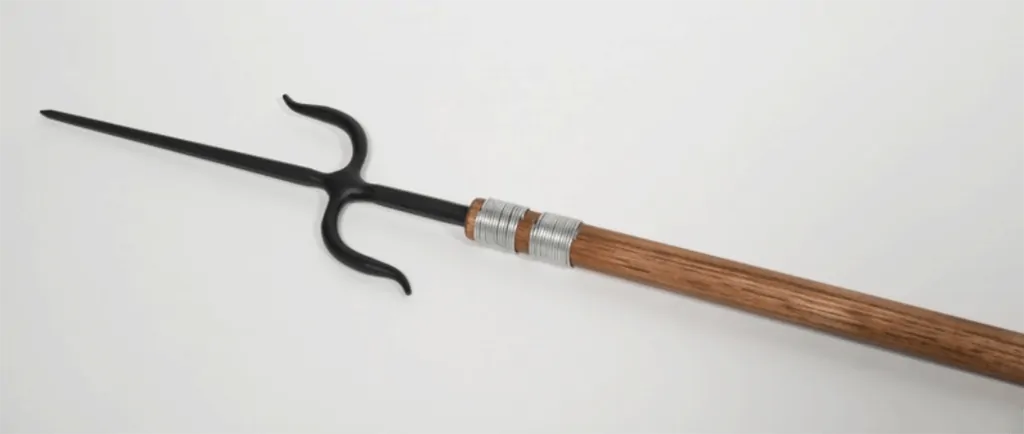
The Sai, Kama and Bō certainly are very popular Kobudō weapons. However, most people never heard of the “Nunti Bo”.
The Nunti Bo is a long pole (Bō) with a trident blade (Manji/Nunti Sai) mounted on the end. One of its prongs faces upwards while the other points downwards. The Nunti Bo has a total length of around 200 cm (6.6 ft) and originated in China during the Ming dynasty (1368-1644 AD). It was later used in Okinawa (Japan).
But now let’s dive deeper into the topic and discover the various special features and use cases of this weapon.
Table of Contents
Special Characteristics of the Nunti Bo
Basically, the Nunti Bo is a spear with hooks. This makes it very unique and not that easy to use correctly.
Someone who already mastered the Manji Sai, can learn the Nunti Bo very fast. The Nunti Bo offers various special stances.
It can be used for stabbing, clubbing, blocking, and trapping enemies. For example, it can be utilized to hook the lower leg of the enemy to throw him off balance. When he is falling forwards a thrust in the throat or chest region can be executed.
The weapon is very top-heavy. In contrast to a regular Sai, the Nunti Bo definitely offers a huge range advantage and the ability to do strong strikes.
History of the Nunti Bo

As literally all Okinawan weapons the Nunti Bo was mainly used for agricultural activities. This is due to the weapon ban imposed by their Satsuma rulers. This tool, in particular, was developed for fishing.
For one the point of the blade could be used to stab fish, while the inward-facing side-guard was used to pull fishing nets in the boat.
The outward hook was used to push the fishing boat away from the dock. Some people believe this weapon originated in China and arrived through trading at Okinawa ~1600 AD.
This surely is possible, but there is a lack of evidence for this theory.
Parts of the Nunti Bo
Last but not least let’s move on to the different parts of the Nunti Bo. As this weapon is derived from a Sai the construction is quite similar:
- Moto: center point between the two sideguards
- Mae Monuchi: the front shaft
- Ushiro Monuchi: the back shaft that is fitted into the Bo
- Mae Saki: the pointed tip of the Mae Monuchi
- Ushiro Saki: the end that is inserted into the Bo
- Saki: the tip of the blade
- Yoko: the sideguards, one is facing upwards and one downwards
Conclusion
Congrats! You have made it to the end of the article. Here I tell you my thoughts about this weapon. In my opinion, the Nunti Bo is a very special and wonderful weapon.
I like to compare it to a swiss army knife as it has so many different use cases. It’s a real multipurpose weapon.
In terms of design, it looks great. It most certainly is a great addition to the arsenal of a collector or a Kobudō practitioner.